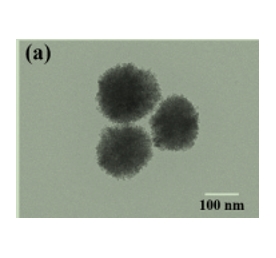文献:Targeted Delivery of Chlorin e6 via Redox Sensitive Diselenide-Containing Micelles forImproved Photodynamic Therapy in Cluster of Differentiation 44-Overexpressing Breast Cancer
文献链接:https://pubmed.ncbi.nlm.nih.gov/31057402/
作者:Chan Feng, Donglei Zhu, Lv Chen, Yonglin Lu, Jie Liu, Na Yoon Kim, Shujing Liang, Xia Zhang, Yun Lin, Yabin Ma ,Chunyan Dong
相关产品:Hyaluronic acid 透明质酸
原文摘要:The off-target activation of photosensitizers is one of the most well-known obstacles to effective photodynamic therapy (PDT). The selected activation of photosensitizers in cancer cells is highly desired to overcome this problem. We developed a strategy that enabled diselenide bonds to link hyaluronic acid (HA) and photosensitizer chlorin e6 (Ce6) to assemble the micelles (HA-sese-Ce6 NPs) that can target cancer and achieve a redox responsive release of drugs to enhance the PDT efficiency in breast cancer. The HA was used to form a hydrophilic shell that can target cluster of differentiation 44 (CD44) on the cancer cells. The selenium-containing core is easily dissembled in a redox environment to release Ce6. The triggered release of Ce6 in a redox condition and the positive feedback release by activated Ce6 were observed in vitro. In cytotoxicity assays and in vitro cellular uptake assays, the increased PDT efficiency and targeted internalization of HA-sese-Ce6 NPs in the cells were verified, compared to a free Ce6 treated group. Similar results were showed in the therapeutic study and in vivo fluorescence imaging in an orthotopic mammary fat pad tumor model. In addition, a significant inhibition of metastasis was found after the HA-sese-Ce6 NPs treatment. In general, this study promises an ingenious and easy strategy for improved PDT efficiency.
透明质酸(Hyaluronic acid,HA)是人体中的一种天然阴离子亲水性多糖,尤其在tumor基质中过表达。透明质酸具有很强的吸水性,能够吸收大量的水分,形成具有高弹性和润滑性的凝胶状物质。这使得它在保持组织的水分含量、维持组织的形态和弹性方面发挥着关键作用。在许多上皮来源的cancer中,如 mammary cancer ,CD44是cancer细胞表面主要上调的HA受体。HA可通过CD44调节cancer细胞的增殖和迁移。因此,HA作为一种很有前途的抗cancer药物靶向配体而受到了人们的关注。此外,HA具有高水溶性的生物相容性、生物降解性和非免疫原性,并且很容易功能化。

图为:自组装HA-sese-Ce6胶束、氧化还原敏感的Ce6释放和触发更多Ce6释放的正反馈回路的方案
HA在简光敏剂传递系统中的应用:
光敏剂传递系统,将二硒化键到自组装胶束。选择HA作为亲水壳层,通过二硒化物键接枝到疏水核Ce6上。合成了两亲性透明质酸-Ce6(HA-SeSe-Ce6)聚合物,并通过自组装形成胶束。在体外研究中,观察到氧化还原反应和正反馈调节Ce6的释放当二硒化物键在氧化还原条件下和在1 O2的存在下被裂解时。

图为:HA-sese-Ce6的合成过程
结论:光敏剂的脱靶激活是有效的光动力Treatment (PDT)的障碍之一。结果表明使二硒化物键连接透明质酸(HA)和光敏剂氯e6(Ce6)组装胶束(HA-sese-Ce6 NPs),可以靶向cancer症,实现氧化还原反应释放,以提高 mammary cancer中的PDT效率。HA被用来形成一个亲水壳,可以靶向cancer细胞上的分化簇44(CD44)。含硒核在氧化还原环境中很容易分解,释放Ce6。在体外观察到氧化还原条件下Ce6的触发释放和激活Ce6的正反馈释放。在细胞有害性试验和体外细胞摄取试验中,与游离Ce6处理组相比,HA-sese-Ce6 NPs的靶向内化增加。

 2025-02-11 作者:lkr 来源:
2025-02-11 作者:lkr 来源:

